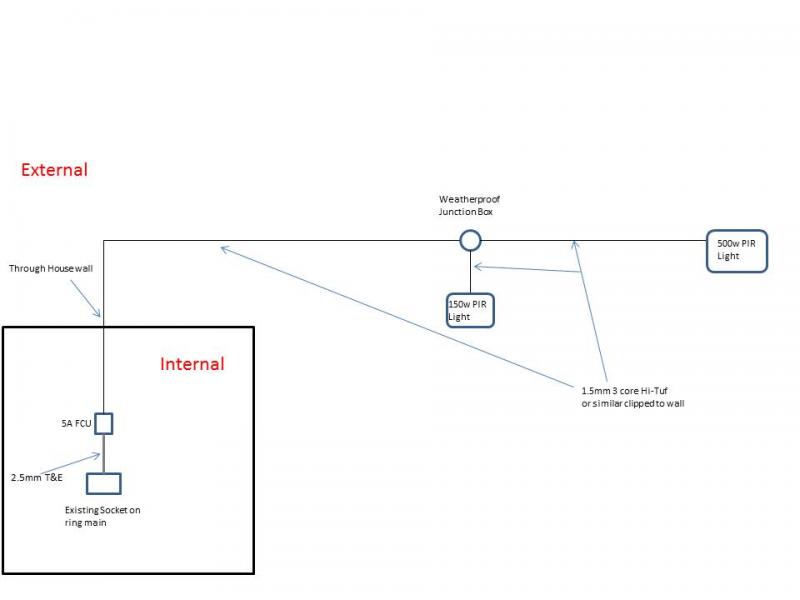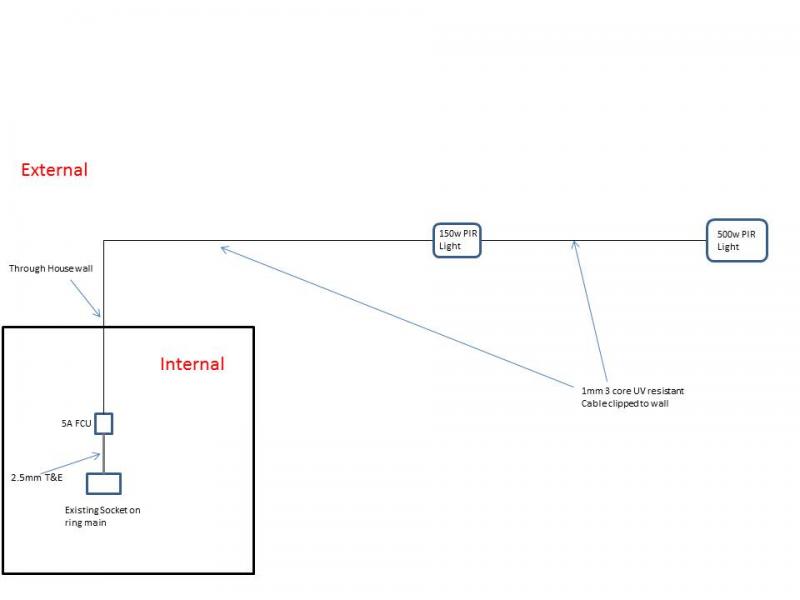- Joined
- 29 Aug 2013
- Messages
- 7
- Reaction score
- 0
- Country

Morning All,
I was just looking for a bit of advice on wiring up two outside lights. I would like to take power from an existing socket in the kitchen to a FCU and then 1.5mm2 HI-Tuf or similar through the wall to the outside and to a junction box for the first light then onto the second light.
Does my wiring on the picture look correct.
I live in Scotland so no part P issues but obviously want to do it safely.
Thanks very much
Trevor
![]()
I was just looking for a bit of advice on wiring up two outside lights. I would like to take power from an existing socket in the kitchen to a FCU and then 1.5mm2 HI-Tuf or similar through the wall to the outside and to a junction box for the first light then onto the second light.
Does my wiring on the picture look correct.
I live in Scotland so no part P issues but obviously want to do it safely.
Thanks very much
Trevor



